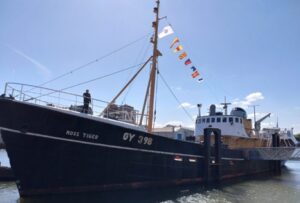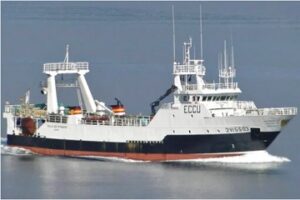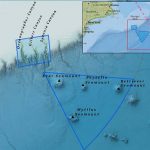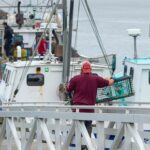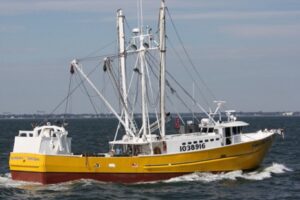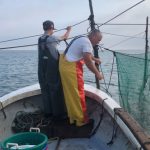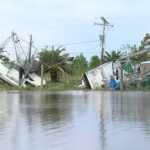Daily Archives: December 4, 2016
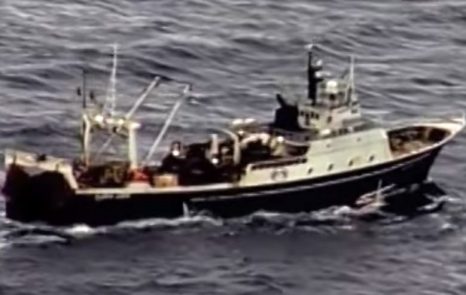
Crew of Alaska Juris abandoned their sinking ship on a mild summer day: Coast Guard hearings begin
When Jonathan Jensen boarded the Alaska Juris last summer for his first stint at sea as a fishery observer, he learned early on that an alarm was supposed to sound should the crew ever need to evacuate. But on July 26, off Alaska’s Aleutian Islands, there was no such emergency signal — indeed, no electricity — as engine-room flooding cut the power and forced the crew to abandon the Washington-based factory trawler. Instead, he says the 46 crew members were forced to rely on word-of-mouth that they all were to assemble on deck, don survival suits and climb into life rafts. “The captain was doing his best to keep it lighthearted and us calm,” Jensen recalls. “He said, ‘When we get back on land, the first round is on me.’ ” Just what caused the flooding — and sinking — of the 229-foot Alaska Juris on a relatively calm summer day in the Bering Sea has not been determined, and will be investigated during two weeks of Coast Guard hearings that begin Monday in Seattle. Read the rest here 21:26
Fish Are Fueling a Battle to Preserve Offshore Rigs as Artificial Reefs along the California Coast
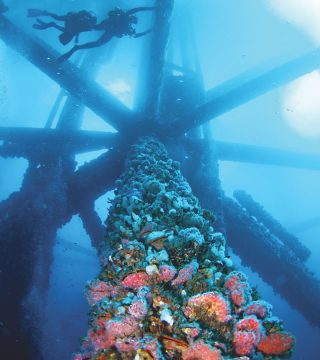 Sprawled on the bottom level of a massive oil rig more than 11 miles from the shores of Long Beach, the half-dozen sea lions grow louder as our boat glides closer. One chews on a fish, holding it with long flippers, while nearly 300 feet above it rises the Ellen, a Mad Max-worthy assemblage of metal tubing and cables that pumps about 2,600 barrels of crude every day. A short distance away, attached by a latticework bridge, is its little sister, the Elly. If it’s strange to see wildlife on such a foreboding structure as it whirs and grinds, it’s stranger to think of all the sea life among the oil platform’s mooring lines and steel legs as
they extend about 260 feet to the ocean floor. “The deeper you go, the more marine life there is,” says Cal State Long Beach marine biologist Chris Lowe. In 2010, Governor Arnold Schwarzenegger signed AB2503, otherwise known as the Rigs-to-Reefs Law, which permits certain oil and gas platforms to be left in place rather than completely removed once their drilling days are done. It was a third attempt to pass such a law. Read the story here 17:00
Sprawled on the bottom level of a massive oil rig more than 11 miles from the shores of Long Beach, the half-dozen sea lions grow louder as our boat glides closer. One chews on a fish, holding it with long flippers, while nearly 300 feet above it rises the Ellen, a Mad Max-worthy assemblage of metal tubing and cables that pumps about 2,600 barrels of crude every day. A short distance away, attached by a latticework bridge, is its little sister, the Elly. If it’s strange to see wildlife on such a foreboding structure as it whirs and grinds, it’s stranger to think of all the sea life among the oil platform’s mooring lines and steel legs as
they extend about 260 feet to the ocean floor. “The deeper you go, the more marine life there is,” says Cal State Long Beach marine biologist Chris Lowe. In 2010, Governor Arnold Schwarzenegger signed AB2503, otherwise known as the Rigs-to-Reefs Law, which permits certain oil and gas platforms to be left in place rather than completely removed once their drilling days are done. It was a third attempt to pass such a law. Read the story here 17:00
South Atlantic Fishery Management Council meeting in Atlantic Beach NC December 5 – 9, 2016
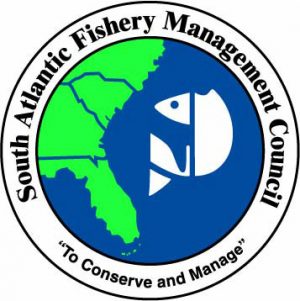 The public is invited to attend the South Atlantic Fishery Management Council to be held in Atlantic Beach NC at the DoubleTree by Hilton Atlantic Beach Oceanfront. Read the Meeting Agenda Click here, Briefing Book – June 2016 Council Meeting Click here Webinar Registration: Listen Live, Click here 15:10
The public is invited to attend the South Atlantic Fishery Management Council to be held in Atlantic Beach NC at the DoubleTree by Hilton Atlantic Beach Oceanfront. Read the Meeting Agenda Click here, Briefing Book – June 2016 Council Meeting Click here Webinar Registration: Listen Live, Click here 15:10
Lessons from accidental oyster sanctuaries
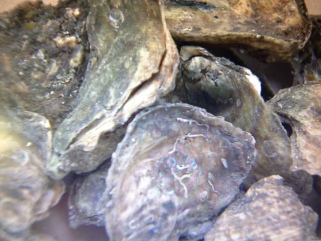 The oysters came up in the dredge like I hadn’t seen them in 50 years (and rarely even back then): huge and clumped together and bedecked with sponges and all manner of marine organisms, including younger oysters, thriving in the niches of the natural reef we’d just busted into. It was last winter, and we’d been dragging the bottom of Virginia’s lower York River for a state crab survey. By chance we’d nicked into an oyster sanctuary, undisturbed for decades. It wasn’t the kind of official sanctuary over which Maryland’s oystermen are wrangling with scientists and environmentalists — the watermen wanting more harvest, others wanting the benefits to the Chesapeake Bay’s water quality and the habitat of an undisturbed oyster reef. The little reef we struck in Virginia, not even designated on charts or given special status in law, is nonetheless well protected. Its enduring and pristine status comes from one of the world’s largest military-industrial complexes, concentrated here in the lower Chesapeake. Read the story here 14:16
The oysters came up in the dredge like I hadn’t seen them in 50 years (and rarely even back then): huge and clumped together and bedecked with sponges and all manner of marine organisms, including younger oysters, thriving in the niches of the natural reef we’d just busted into. It was last winter, and we’d been dragging the bottom of Virginia’s lower York River for a state crab survey. By chance we’d nicked into an oyster sanctuary, undisturbed for decades. It wasn’t the kind of official sanctuary over which Maryland’s oystermen are wrangling with scientists and environmentalists — the watermen wanting more harvest, others wanting the benefits to the Chesapeake Bay’s water quality and the habitat of an undisturbed oyster reef. The little reef we struck in Virginia, not even designated on charts or given special status in law, is nonetheless well protected. Its enduring and pristine status comes from one of the world’s largest military-industrial complexes, concentrated here in the lower Chesapeake. Read the story here 14:16
Big changes in the air over little menhaden? – Hearings examine ecological value, catch allocation of forage fish species
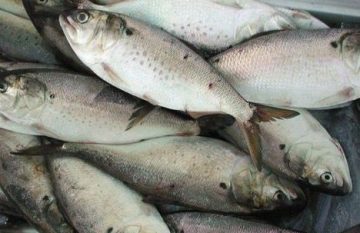 The Atlantic States Marine Fisheries Commission, which regulates near-shore fishing from Maine to Florida — including the Chesapeake Bay — has invited public comment on several questions about future management of the menhaden fishery at hearings all along the coast. Sessions in the Bay watershed begin Monday, Dec. 5. The most important issue under consideration involves setting new “reference points” regulating the catch of menhaden that would account for their value to other fish and predators — not just their commercial importance. But the commission also is weighing whether to shake up how the total catch is distributed along the coast. Read the slanted story here Review Public information document for Amendment 3 to the Interstate Fishery Management Plan For Atlantic Menhaden here 12:11
The Atlantic States Marine Fisheries Commission, which regulates near-shore fishing from Maine to Florida — including the Chesapeake Bay — has invited public comment on several questions about future management of the menhaden fishery at hearings all along the coast. Sessions in the Bay watershed begin Monday, Dec. 5. The most important issue under consideration involves setting new “reference points” regulating the catch of menhaden that would account for their value to other fish and predators — not just their commercial importance. But the commission also is weighing whether to shake up how the total catch is distributed along the coast. Read the slanted story here Review Public information document for Amendment 3 to the Interstate Fishery Management Plan For Atlantic Menhaden here 12:11
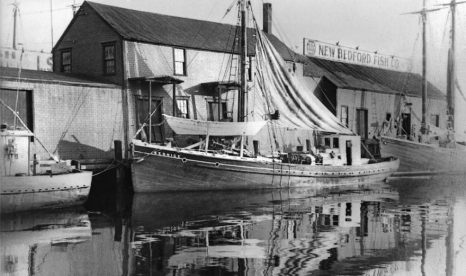
Trivia: Sail back to the early days of New Bedford fish dealers
Chatham-born Linus S. Eldridge went to sea as a teenager. By the time of his marriage in 1902, however, he had left fishing to become a fish dealer. He and his wife, Harriet Nelson Dexter, settled in her hometown of Mattapoisett, operated a fish trap there, and began dealing in seafood. They bought scallops and quahogs from local fishermen, stocked the goods in their garage and resold them to wholesalers. Years later, to break into the New Bedford market, the Eldridges had to outmaneuver the politically connected J. S. Childs family, who ran the New Bedford Fish Company on Pier 4, eventually buying them out. Boats began landing fish there for Eldridge in 1928. Read the story here 09:53
Coast Guard conducts medevac from fishing vessel off Oahu
 The Coast Guard medevaced the master of the 70-foot fishing vessel Lady J3 about 41 miles north of Oahu Saturday morning. An MH-65 Dolphin helicopter crew from Air Station Barbers Point safely medevaced the 36-year-old man to Queens Medical Center in Honolulu for treatment. He was reportedly suffering from swelling to his lower extremities and was unable to stand. Coast Guard watchstanders at Joint Rescue Communications Center Honolulu received a request for the medevac from the NOAA Fisheries observer aboard the Lady J3 mid-morning Friday. The vessel was 176 miles north of Kauai at the time, heading toward Oahu and maintained a six-hour communications schedule with Coast Guard Sector Honolulu watchstanders. By the evening the master’s condition had deteriorated and he was having trouble breathing. At the recommendation of the Coast Guard flight surgeon the vessel continued to make best course and speed toward Oahu to close the distance and bring them into range of the Coast Guard Dolphin crew. The medevac was conducted at first light to bring the master to a higher level of medical care. Weather conditions at the time of the hoist were reportedly 12 mph winds with seas to 7 feet, haze and showers. link 09:26
The Coast Guard medevaced the master of the 70-foot fishing vessel Lady J3 about 41 miles north of Oahu Saturday morning. An MH-65 Dolphin helicopter crew from Air Station Barbers Point safely medevaced the 36-year-old man to Queens Medical Center in Honolulu for treatment. He was reportedly suffering from swelling to his lower extremities and was unable to stand. Coast Guard watchstanders at Joint Rescue Communications Center Honolulu received a request for the medevac from the NOAA Fisheries observer aboard the Lady J3 mid-morning Friday. The vessel was 176 miles north of Kauai at the time, heading toward Oahu and maintained a six-hour communications schedule with Coast Guard Sector Honolulu watchstanders. By the evening the master’s condition had deteriorated and he was having trouble breathing. At the recommendation of the Coast Guard flight surgeon the vessel continued to make best course and speed toward Oahu to close the distance and bring them into range of the Coast Guard Dolphin crew. The medevac was conducted at first light to bring the master to a higher level of medical care. Weather conditions at the time of the hoist were reportedly 12 mph winds with seas to 7 feet, haze and showers. link 09:26
Monhegan Island is the wrong place for wind turbines
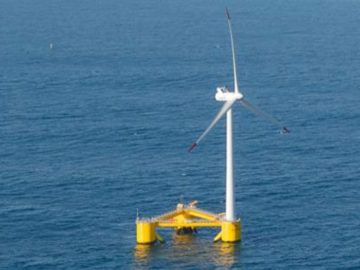 A recent Press Herald article described Protect Monhegan as a “small group” of island residents seeking the relocation of wind turbines to be placed little more than two miles from our island. While we may be small in terms of the big institutions we are up against – Maine’s largest public university (the University of Maine), largest construction company (Cianbro Corp.) and second-largest electric utility (Emera Maine) – we represent the views of nearly half of Monhegan Island residents, as well as many other seasonal residents and visitors from around the world. Like many of us who live here, they simply can’t understand why – of all the places along Maine’s 3,500-mile coastline – the waters off Monhegan must be the place to experiment with two 585-foot wind turbines. The fact is, the process that led to this decision has been anything but transparent. What was originally presented as a one-eighth-scale turbine, which would be tested for two five-month periods, has morphed into a 20-year-long major project, with industrial-scale wind turbines on floating towers and backed by $48 million of taxpayer money. Read the rest here 08:35
A recent Press Herald article described Protect Monhegan as a “small group” of island residents seeking the relocation of wind turbines to be placed little more than two miles from our island. While we may be small in terms of the big institutions we are up against – Maine’s largest public university (the University of Maine), largest construction company (Cianbro Corp.) and second-largest electric utility (Emera Maine) – we represent the views of nearly half of Monhegan Island residents, as well as many other seasonal residents and visitors from around the world. Like many of us who live here, they simply can’t understand why – of all the places along Maine’s 3,500-mile coastline – the waters off Monhegan must be the place to experiment with two 585-foot wind turbines. The fact is, the process that led to this decision has been anything but transparent. What was originally presented as a one-eighth-scale turbine, which would be tested for two five-month periods, has morphed into a 20-year-long major project, with industrial-scale wind turbines on floating towers and backed by $48 million of taxpayer money. Read the rest here 08:35

































